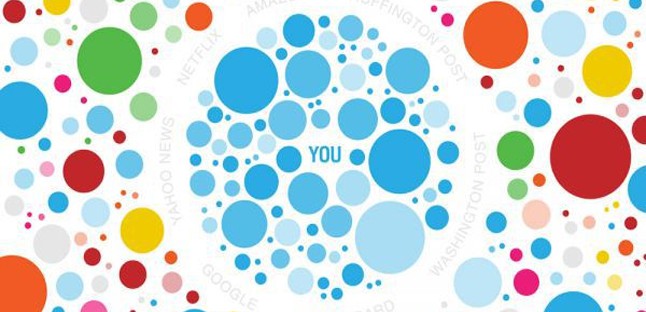Latest posts
A masterclass in creating value
What’s going on at parkrun?
Virtue-signalling all the way to the bank
Bud Light: brand purpose or virtue-signalling?
The Coddling of the American Mind, by Greg Lukianoff and Jonathan Haidt
Belonging, by Owen Eastwood
Such a simple thing
The Long Win, and The Scout Mindset
The Cult of We by Eliot Brown and Maureen Farrell
Coffee and covid modelling
By theme
Marketing strategy
Insight & metrics
Innovation & inspiration
Brand & positioning
Marketing communications
Business purpose
Leadership
By industry sector
Financial services
Retail
FMCG
Technology & start-ups
Consumer services
Business to business
Other sectors
By type
Books
Comment
Quotes
Thought leadership
Algorithms are distorting the news and, maybe, damaging democracy. So says everyone (that’s to say, everyone in my filter bubble). Personalisation can take us to an online world perfectly in tune with our preferences, interests and opinions, in which everything feels relevant and nothing is dissonant. Bad for democracy it may be, but it’s the holy grail of marketing. What’s more, it can be done by machines, thanks to online analytics and algorithms. But marketers are not redundant just yet, and here’s why.
To do online personalisation well, we have to recognise its stages, and how to use them. There are four stages:
Stage one: Recognition. The magic of prepopulated forms, remembered sites, relevant offers. These provide a service for customers – make it easy, make it faster, be useful. These are pre-algorithm tricks and tools that automate the user journey. There’s still room for improvement here.
Stage two: Approximation. Amazon in its early days – for many of us, our first known encounter with an algorithm. The “people who bought that also bought this” feature felt like genius, and provided inspiration, particularly necessary in an online bookshop. But for me it’s gone stale. Perhaps it’s because Amazon now has so much data about my own browsing and purchases. It no longer inspires because there is no element of surprise, just more of the same. This is:
Stage three: Precision. The point reached by the current market leaders in online retail, and it is so dull and unhelpful. “You bought this egg poacher. How about this egg poacher?” “Fiona, we have offers for you in Leicester.” (Yes I was there for a meeting last week. No plans to go again.) “Great deals on sportswear.” (Not now I’m fully stocked on Lycra for the next ten years.)
It’s especially bad in travel. The absence of common sense or any human touch is apparent in Airbnb and Trip Advisor endlessly offering suggestions and deals on the places I’ve been. As if, having been to Seville one Easter, I surely must want nothing more than to go there again. Then there’s the retargeting that triggers buyer’s remorse. No sooner have you finished your extensive research and placed the order than you’re hit by a blitz of ads for similar products – always superior, of course, and always better value.
In some categories, perhaps most, stuff that’s adjacent to what we’ve already bought or done is more interesting than more of the exact same. The approximation stage delivered this because there wasn’t enough data to do otherwise. More data enables a more refined approach but it isn’t better for the customer. A little human thought will reveal the opportunity to move to?
Stage four: Customisation. Don’t give me Seville, give me mid-sized European cities. Recognise which of my purchases are one-offs and which are consumables, for which I might welcome more information and deals. If you don’t know, ask me. I’ll happily tick boxes to get information about similar or related stuff, if it lets me opt out of more of the same. Use your brain, and surprise me.
“So now you’ve been to Leicester, Fiona, you might like to try Coventry.” Oh hang on, there’s more to this than a simple algorithm can solve. Looks like marketers can’t be replaced by robots just yet.
Latest posts
A masterclass in creating value
What’s going on at parkrun?
Virtue-signalling all the way to the bank
Bud Light: brand purpose or virtue-signalling?
The Coddling of the American Mind, by Greg Lukianoff and Jonathan Haidt
Belonging, by Owen Eastwood
Such a simple thing
The Long Win, and The Scout Mindset
The Cult of We by Eliot Brown and Maureen Farrell
Coffee and covid modelling
By theme
Marketing strategy
Insight & metrics
Innovation & inspiration
Brand & positioning
Marketing communications
Business purpose
Leadership
By industry sector
Financial services
Retail
FMCG
Technology & start-ups
Consumer services
Business to business
Other sectors
By type
Books
Comment
Quotes
Thought leadership
